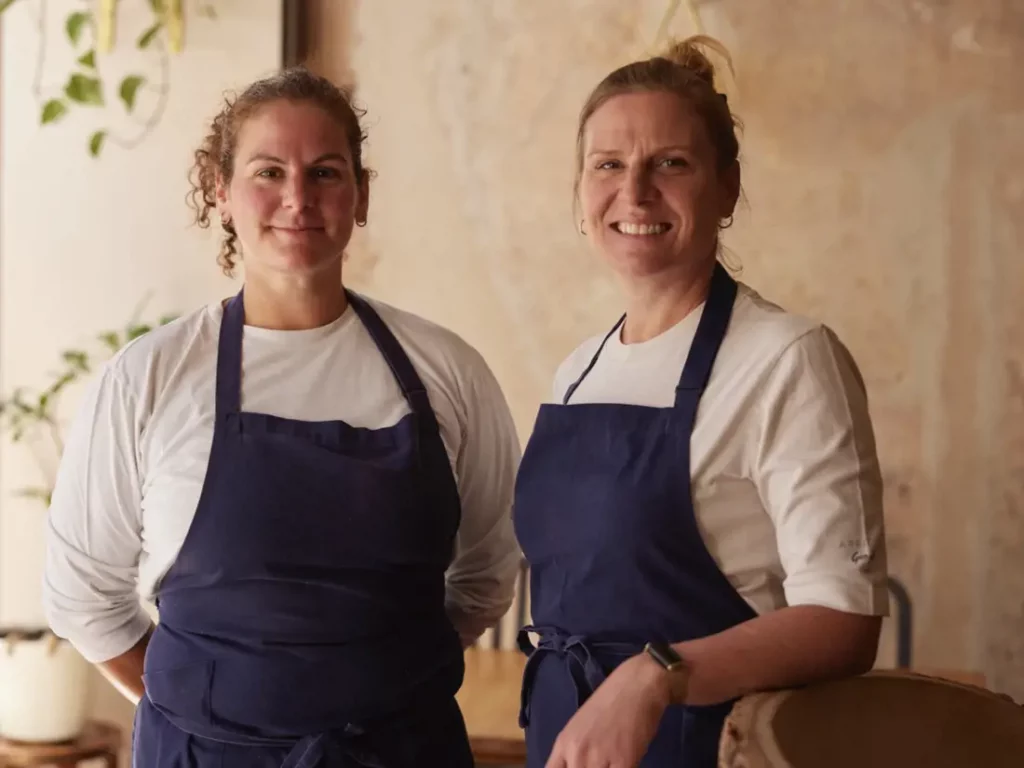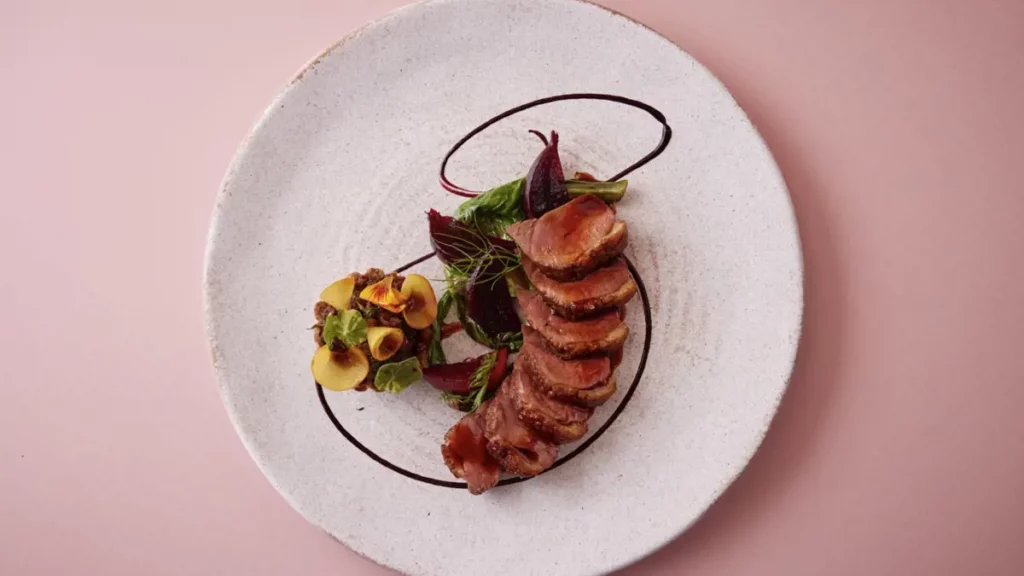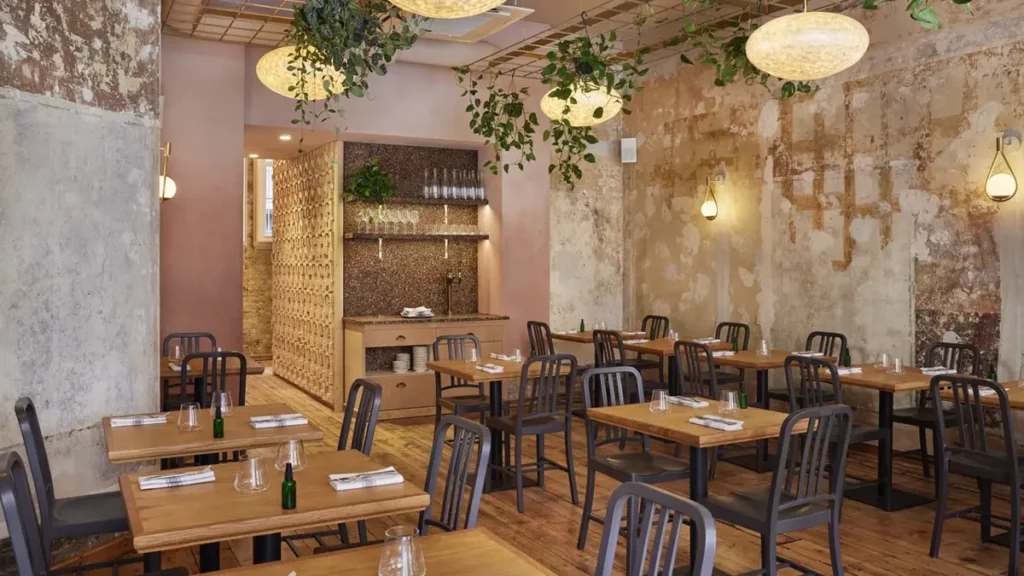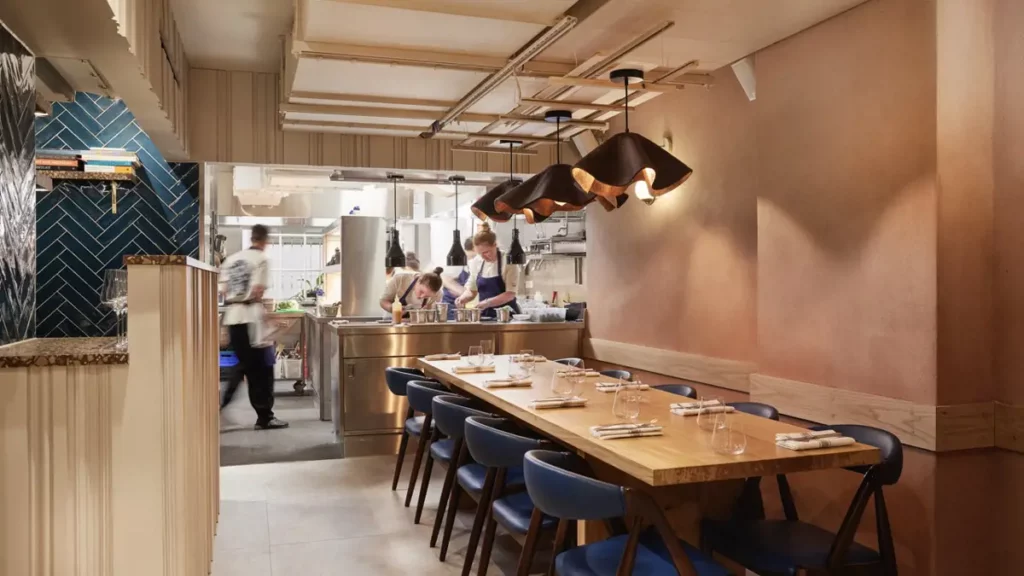More Plants, Better Meat: Apricity
10 September 2024
Share this exclusive content from Saladplate

Eve Seemann and Chantelle Nicholson.
Photo Credit: Paul Richardson
LED BY CHEF CHANTELLE NICHOLSON, LONDON-BASED APRICITY IS A RESTAURANT DESIGNED WITH A FOCUS ON LOW-WASTE COOKING AND SUSTAINABLE SOURCING AT ITS CORE. ONE OF THE FOREMOST FEMALE VOICES IN THE UK’S HOSPITALITY INDUSTRY, CHANTELLE IS AN ADVOCATE FOR SEASONALITY AND SUSTAINABILITY AND PROUDLY CHAMPIONS CREATIVE AND INTERESTING VEGETABLE-FORWARD COOKING.
With this month’s focus on More Plants, Better Meat, we were eager to speak to the team at Apricity about how restaurants can shine in this area, so we sat down with Chantelle and Head Chef Eve Seemann.
“Restaurants notoriously have a significant environmental impact through both the ingredients they use and the energy and operational side of things,” says Owner and Head Chef at Apricity, Chantelle Nicholson. “At Apricity, we’ve deliberately applied the concept of a circular economy throughout all aspects of the business, which naturally goes hand-in-hand with the more commonly used term ‘sustainability’. We strongly believe that this approach has now become a necessity.”
Let’s dive into what this looks like at Apricity, particularly where More Plants, Better Meat is concerned.
SERVING MORE PLANTS . . .
At Apricity, 50% of the menu is plant-based as a matter of course. Alongside their à la carte selection, they offer five- and seven-course tasting menus with the option to choose either a plant-based dish or an animal protein dish. The seven-course option includes an additional plant-based course.
Grains and pulses feature heavily on the menus here, used as garnishes as well as the main components of both plant-based and non-plant-based dishes. The team sources a wide selection of British-grown, organic pulses and grains from Hodmedods; lesser-known varieties like badger peas, fava beans, yellow peas and yellow pea flour are familiar favourites in Apricity. “Every guest is greeted with a doughnut made from chickpeas and stuffed with fermented fava beans,” says Head Chef Eve Seemann.
She explains that the impetus behind this is simple: pulses and grains require less land, water and energy to grow, resulting in a low environmental impact. “There are also many known health benefits in consuming more grains and pulses, including lowering the risk of heart disease and diabetes.” With these benefits in mind, the kitchen team is constantly working on new recipes that include pulses and grains. “One recent example is a new tofu-style mix we’ve developed using pink flamingo peas.”
… AND BETTER MEAT
“We’re not preaching a totally plant-based diet – far from it,” Eve clarifies. “We feature meat on our menus very proudly. However, we ensure our sourcing is done carefully and that the right farms and farmers are supported.”
Eve explains what they look for in sourcing better meat, noting that regenerative methods like rotational grazing and livestock integration allow farmers to maintain the fertility of the soil. “This contrasts in many ways with industrial meat production, which is synonymous with soil depletion and irreversible damage to the ecosystem.” Another strong benefit is topsoil preservation. “The top six inches of soil famously plays a key role in future agricultural productivity and, therefore, the future of our food. This is why it’s important to support the right individuals, working together towards fixing a broken food system and securing its future.”

For Eve, the benefits of actively working with more plants and better meat are evident. “Firstly, it minimises our environmental impact. Buying less meat reduces our carbon footprint, while supporting regenerative and sustainable farming enhances soil health and biodiversity.” She observes that choosing suppliers with this ethos also usually results in higher quality produce, which naturally leads to an enhanced dining experience. “The care taken in rearing and growing regeneratively translates into delectable flavours.”

This approach also provides an opportunity for an important dialogue between the guests and the staff, exploring the need for responsible agriculture and the benefits of plant-rich diets. “This makes the customer experience even more personalised and memorable, enticing them to return,” says Chantelle. She also notes that this can have a ripple effect in the longer term. “Sharing knowledge about these practices means our guests are more informed, which can generate an interest in reproducing similar practices at home.”

Duck dish at Apricity.
Photo credit: Paul Richardson
Food Made Good at Apricity
The team at Apricity undertook their first Food Made Good evaluation in early 2024 and were awarded three well-deserved stars by our team of evaluators. More Plants, Better Meat was one of their highest-scoring focus areas, with an incredible 95%. “The certification provided by The SRA is a true indication of all the work that goes into taking concrete action and running a sustainable operation,” says Chantelle. “The process itself stood out, too: not only it is very thorough and well designed, but advice is also offered where needed to ensure that best practices are put in place. It is a comprehensive Framework helping us improve and push the business in the right direction.”

Before they took the Standard, provenance was already at the heart of operations at Apricity. “The SRA has, however, ensured we double check the MSC status of the fish we purchase, as well as keeping the conversation open with our fishmonger,” says Eve. The Standard has also had a somewhat unexpected result: “It’s attracted a lot of students wanting to write their dissertation on the restaurant, which is, in itself, proof that we stand out!”
Looking forward, Eve says that the team aims to keep implementing what got them here in the first place while also improving on what still remains unsolved. “We’ll be looking at things like reducing waste even further, including plate waste; finding new uses for by-products; and looking into energy and water use. We’re also always looking for more seeds and grains to include on our menu, and are in constant communication with our suppliers to see where our collaborations can take us.”

Apricity restaurant interior.
Photo credit: Ben Carpenter
Waliki Coffee, Bolivia.
Photo credit: Ozone Coffee

The Chef’s Table at Apricity.
Photo credit: Ben Carpenter

Source: The Sustainable Restaurant Association



